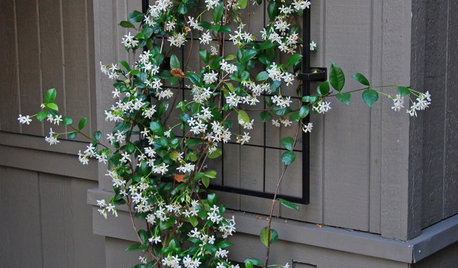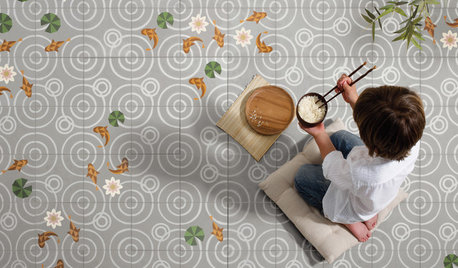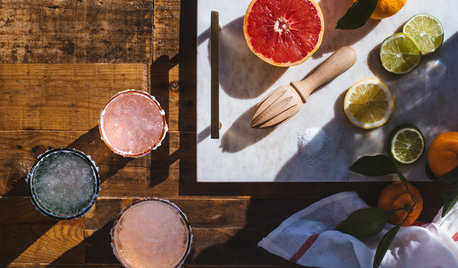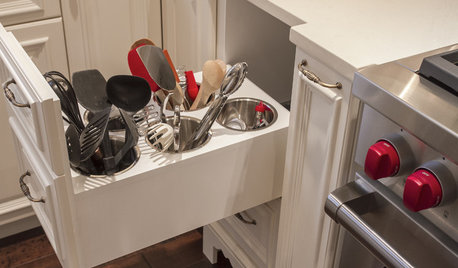ANATOMY OF A STIR-FRY
Excerpt From: The Editors of Cooks Illustrated. “The Cook's Illustrated How-to-Cook Library.” Apple Books.
TO STIR-FRY PROPERLY YOU NEED plenty of intense heat. The pan must be hot enough to caramelize sugars, deepen flavors, and evaporate unnecessary juices. All this must happen in minutes. The problem for most American cooks is that the Chinese wok and American stovetop are a lousy match that generates moderate heat at best.
Woks are conical because in China they traditionally rest in cylindrical pits containing the fire. Food is cut into small pieces to shorten cooking time, thus conserving fuel. Only one vessel is required for many different cooking methods, including sautéing (stir-frying), steaming, boiling, and deep frying.
Unfortunately, what is practical in China makes no sense in America. A wok was not designed for stovetop cooking, where heat comes only from the bottom. On an American stove, the bottom of the wok gets hot but the sides are only warm. A horizontal heat source requires a horizontal pan. Therefore, for stir-frying at home, we recommend a large skillet, twelve to fourteen inches in diameter, with a nonstick coating.
American stoves necessitate other adjustments. In Chinese cooking, intense flames lick the bottom and sides of a wok, heating the whole surface to extremely high temperatures. Conventional stoves simply don't generate enough British Thermal Units (BTUs) to heat any pan (whether a wok or flat skillet) sufficiently. American cooks must accommodate the lower horsepower on their stoves. Throw everything into the pan at one time and the ingredients will steam and stew, not stir-fry.
One solution is to boil the vegetables first so that they are merely heated through in the pan with the other stir-fry ingredients. We find this precooking to be burdensome and reserve it only for vegetables such as broccoli and cauliflower that require it. We prefer to cut the vegetables quite small and add them to the pan in batches. By adding a small volume of food at a time, the heat in the pan does not dissipate. Slow-cooking vegetables such as carrots and onions go into the pan first, followed by quicker-cooking items such as zucchini and bell peppers. Leafy greens and herbs go in last.
When the vegetables are done, the aromatics (scallions, ginger, and garlic) are briefly cooked and then the seared meat, chicken, seafood, or tofu is added back to the pan along with the sauce. The result is a complete meal, perfect for weeknight dinners, that takes into account the realities of cooking in an American kitchen.
POINTERS FOR SUCCESS
We uncovered a number of helpful tips and discoveries in our stir-fry testing. Keep these points in mind as you work through the recipes in this book.
FREEZE, SLICE, AND MARINATE PROTEIN
Most stir-fries start with some sort of protein, either beef, chicken, pork, shrimp, scallops, squid, fish, or tofu. All protein must be cut into bite-size pieces. We find it best to freeze beef, chicken, and pork for an hour or so to make slicing easier. We marinate all protein, once sliced, in a mixture of soy sauce and dry sherry while preparing the vegetables and sauce. Just make sure to drain the protein before stir-frying. If you add the marinating liquid, the protein will stew rather than sear.
PROPER RATIO OF PROTEIN TO VEGETABLES
A good stir-fry for four people needs only a three-quarter pound of protein to one and one-half pounds of prepared vegetables. This ratio keeps the stir-fry from becoming too heavy and is more authentic since meat is a luxury used sparingly in China. Serve with plenty of rice (see recipes in chapter six) or over boiled noodles, especially Chinese egg noodles (which resemble linguine) or thin cellophane rice noodles (which look like transparent angel hair pasta).
COOK IN BATCHES
Most proteins can be cooked in a single batch. The exceptions are flank steak, pork tenderloin, scallops, and squid, which shed a lot of liquid and will stew if cooked all at once. Vegetables, with a few exceptions such as snow peas, must be batched so that no more than one-half pound is added to the pan at one time.
In any case, sear the protein first and then remove it from the pan before cooking the vegetables. Start longer-cooking vegetables, such as onions and carrots, first. With the first batch still in the pan, add medium-cooking vegetables, such as bell peppers and mushrooms, and then finally add fast-cooking leafy greens and fresh herbs.
Note that vegetable cooking times will be affected by how they are prepared. For instance, sliced mushrooms will cook more quickly than whole mushrooms. Keep this in mind when deciding in what order to add vegetables to your own stir-fries.
In some cases, you may need to remove cooked vegetables from the pan before adding the next batch. This is especially important if you are cooking large amounts of leafy vegetables that throw off a lot of liquid, such as spinach. Follow the suggestions in individual recipes.
VARY AMOUNT OF OIL BASED ON INGREDIENTS
Some foods, such as shrimp and chicken, will not stick much and can be stir-fried in a minimum of oil, no more than one tablespoon. Other foods, such as fish, eggplant, and mushrooms, tend to soak up oil and may require more. See specific recipes for suggestions.
PRECOOK VEGETABLES ONLY AS NEEDED
We prefer not to precook vegetables, which often adds an unnecessary step. We would rather cut vegetables quite small (no larger than a quarter). However, some vegetables, such as broccoli and cauliflower florets, are difficult to cut this small; they tend to fall apart. Other vegetables, such as asparagus and green beans, may burn on the exterior before cooking through if added raw to a stir-fry. Therefore, we find it is necessary to blanch broccoli and cauliflower florets as well as asparagus and green beans.
ADD AROMATICS AT END
Many stir-fry recipes add the aromatics (scallions, garlic, and ginger) too early, causing them to burn. After cooking the vegetables, we push them to the sides of the pan, add a little oil and the aromatics too early, causing “causing them to burn. After cooking the vegetables, we push them to the sides of the pan, add a little oil and the aromatics to the center of the pan, and cook briefly until fragrant but not colored, about ten seconds. To keep the aromatics from burning and becoming harsh-tasting, we then remove the pan from the heat and stir them into the vegetables for twenty seconds.
VARY AROMATICS AS NEEDED
We find that two tablespoons of chopped scallion whites, one tablespoon of minced garlic, and one tablespoon of minced ginger works well in a basic stir-fry for four. But feel free to adjust these amounts based on personal tastes and other ingredients in the stir-fry. For instance, beef works well with more garlic, and many seafood dishes taste fine with more ginger. To add heat to any stir-fry, add hot red pepper flakes or minced fresh chiles with the aromatics.
DON'T USE CORNSTARCH IN SAUCES
Once the aromatics have been cooked, it's time to add the cooked protein and the sauce. We find that cornstarch-thickened sauces are often gloppy and thick. Omitting this ingredient produces cleaner-tasting and brighter sauces. Without cornstarch, it is necessary to keep the amount of sauce to a reasonable amount (about one-half cup) that will thicken slightly on its own with a minute or so of cooking.
USE SUGAR SPARINGLY
Even sweet sauces, such as sweet-and-sour, should contain a minimum of sugar. Too much Chinese food prepared in this country is overly sweet. A little sugar is authentic “(and delicious) in many recipes; a lot of sugar is not.
READ MASTER RECIPES
The following Master Recipe for Basic Stir-Fry is the key to understanding the recipes in this book. Read it carefully. The individual stir-fry recipes in Chapters Three, Four, and Five use the master recipe, with specific proteins, vegetables, and sauces plugged in to create delicious meals. Chapter Six contains recipes for a variety of simple sauces as well as several rice preparations.
Master Recipe
Basic Stir-Fry
NOTE: Figures 1–9, illustrate the essential steps in this recipe. You may use a regular 12- or 14-inch skillet or a 12-inch Dutch oven in place of the recommended nonstick skillet, but you will need to use slightly more oil. This recipe serves four people.
3/4 pound meat, seafood, or tofu, cut into small, even pieces
1 tablespoon soy sauce
1 tablespoon dry sherry
1 recipe any sauce
2-4 tablespoons peanut or vegetable oil
11/2 pounds prepared vegetables, cut into small pieces (none bigger than a quarter) and divided into several batches based on cooking times
2 tablespoons minced scallions, white parts only
1 tablespoon minced garlic
1 tablespoon minced fresh ginger root
Basic Stir-Fry
1. Toss meat, seafood, or tofu with soy sauce and sherry in medium bowl; set aside and toss once or twice as you work on rest of recipe. Prepare sauce and vegetables; set aside.
2. Heat 12- or 14-inch nonstick skillet over high heat for 3 to 4 minutes. (Pan should be so hot you can hold outstretched hand one inch over pan for only three seconds.) Add 1 tablespoon oil (2 tablespoons for fish) and swirl oil so that it evenly coats bottom of pan. Heat oil until it just starts to shimmer and smoke. Check heat with hand as before.
3. Drain meat, seafood, or tofu and add to pan. (Add beef, pork, scallops, and squid in two batches.) Stir-fry until seared and about three-quarters cooked, 40 to 60 seconds for fish and scallops; 1 minute for beef, shrimp, and squid; 2 minutes for pork; 21/2 minutes for tofu; and 21/2 to 3 minutes for chicken. Scrape cooked meat, seafood, or tofu and all liquid into bowl. Cover and keep warm.
4. Let pan come back up to temperature, 1 to 2 minutes. When hot, drizzle in 2 teaspoons oil. When oil just starts to smoke, add first batch of long-cooking vegetables. Stir-fry until vegetables are just tender-crisp, 1 to 2 minutes. Leaving first batch in pan, repeat with remaining vegetables, adding 1 teaspoon oil for each batch and cooking each set until crisp-tender, or wilted for leafy greens.
5. Clear center of pan and add scallions, garlic, and ginger. Drizzle with 1/2 teaspoon oil. Mash into pan with back of a spatula. Cook until fragrant but not colored, about 10 seconds. Remove pan from heat and stir scallions, garlic, and ginger into vegetables for 20 seconds.
6. Return pan to heat and add cooked meat, seafood, or tofu. Stir in sauce and stir-fry until ingredients are well coated with sauce and sizzling hot, about 1 minute. Serve immediately with rice.














Related Discussions
Stir-fry chicken disasters stressing me out!
Q
Curious about stir fry preparation.
Q
Best (Healthy) Oil for Stir Fry?
Q
Improvising Stir Fry Meals From Refrigerator Velcro
Q